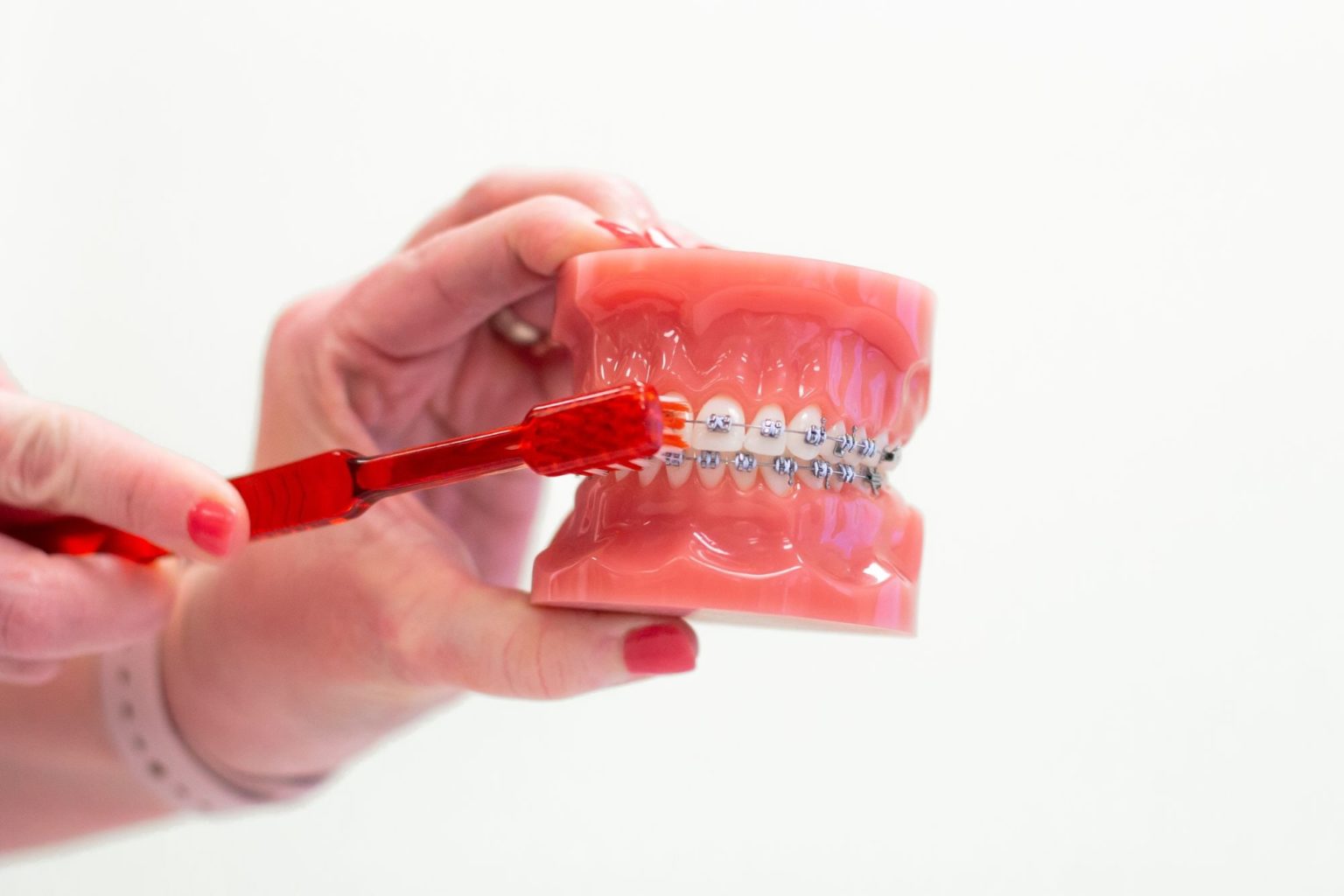Treatment You Can Trust
Metal braces are the most common type of treatment here at Mahaffey Linkous Orthodontics. Thanks to modern technology, they’re more comfortable and efficient for patients of all ages throughout Peachtree City.
About Metal Braces
Traditional metal braces are a system of metal brackets bonded to the teeth using a special dental adhesive. Those brackets are then linked with wires to gently move your teeth into their intended positions over 6 to 24 months, depending on your unique treatment plan.
Metal braces are tied with silver or more colorful elastic ties, which can make an individual fashion statement for a more fun time in treatment.
Today’s braces are smaller, less noticeable, and easier to brush around than braces of the past and can be an excellent choice for any age!
Braces can be more effective at treating certain types of overcrowding or other bite issues than other orthodontic treatments. Dr. Mahaffey or Dr. Linkous will help you determine the best fit for your smile at your free consultation.
Metal Braces FAQ
Self-Ligating Braces
Self-ligating braces, also known as Damon Braces, look similar to traditional braces. There are brackets on each tooth and a wire to link them together.
However, where traditional braces use elastics to hold the wire in place, self-ligating braces use a clip to hold the wire together, making them a little subtler. These require fewer visits and work faster than traditional treatment.
Self-ligating braces are an excellent option for a busy lifestyle! We will review this with you if Dr. Mahaffey or Dr. Linkous recommends them for your particular situation.

The Parts of Traditional Braces
Brackets
We use brackets made from a mix of durable metals with little hooks or doors where we thread a wire. Your orthodontist secures your bracket by closing the door or placing an elastic over the top of the wire.
Glue
This is how Dr. Mahaffey and Dr. Linkous attach the brackets to your teeth.
Wire
This thin metal runs from one bracket to another, and your doctor shapes and curves it to guide your teeth in the right direction.
Normally, the wire attaches to all of your bottom or upper teeth, but we might cut the wire if connecting just a few teeth is better for your treatment plan.
Elastics
If you need bite correction, elastics are essential. We normally string elastics between an upper and lower bracket hook to pull your upper jaw backward to correct an overbite or the lower jaw back to correct an underbite.
Orthodontic Bands
We cement these stainless steel rings to your teeth using dental bonding agents. These bands anchor your braces and orthodontic appliances, but they aren’t always necessary.
Spacers
These tiny elastic “donuts” or rings create space between your teeth when needed, typically before we place your bands, and are also referred to as "separators.”
Elastic Ties/O-Rings/Ligatures/Colors
These are what we use to attach the archwire to the brackets. Elastics are less rigid than spacers, and you can get them in your favorite colors.